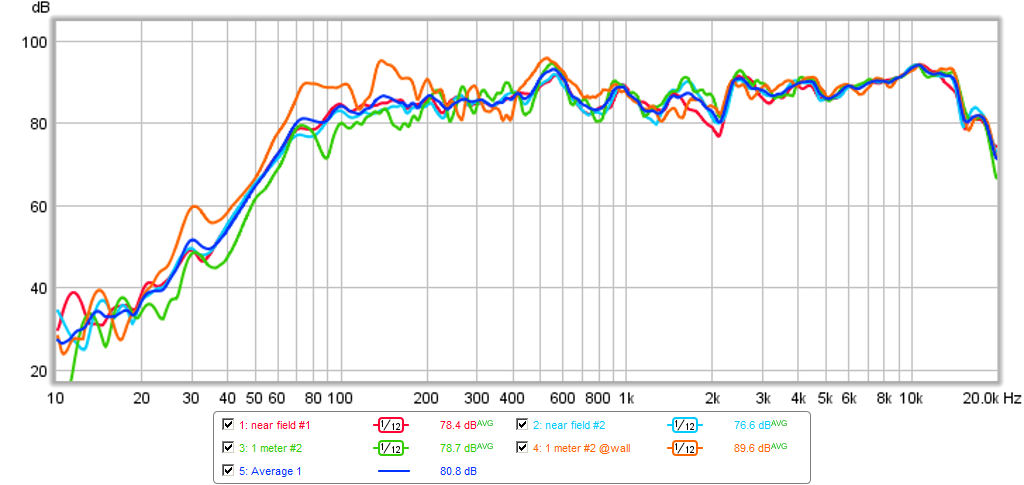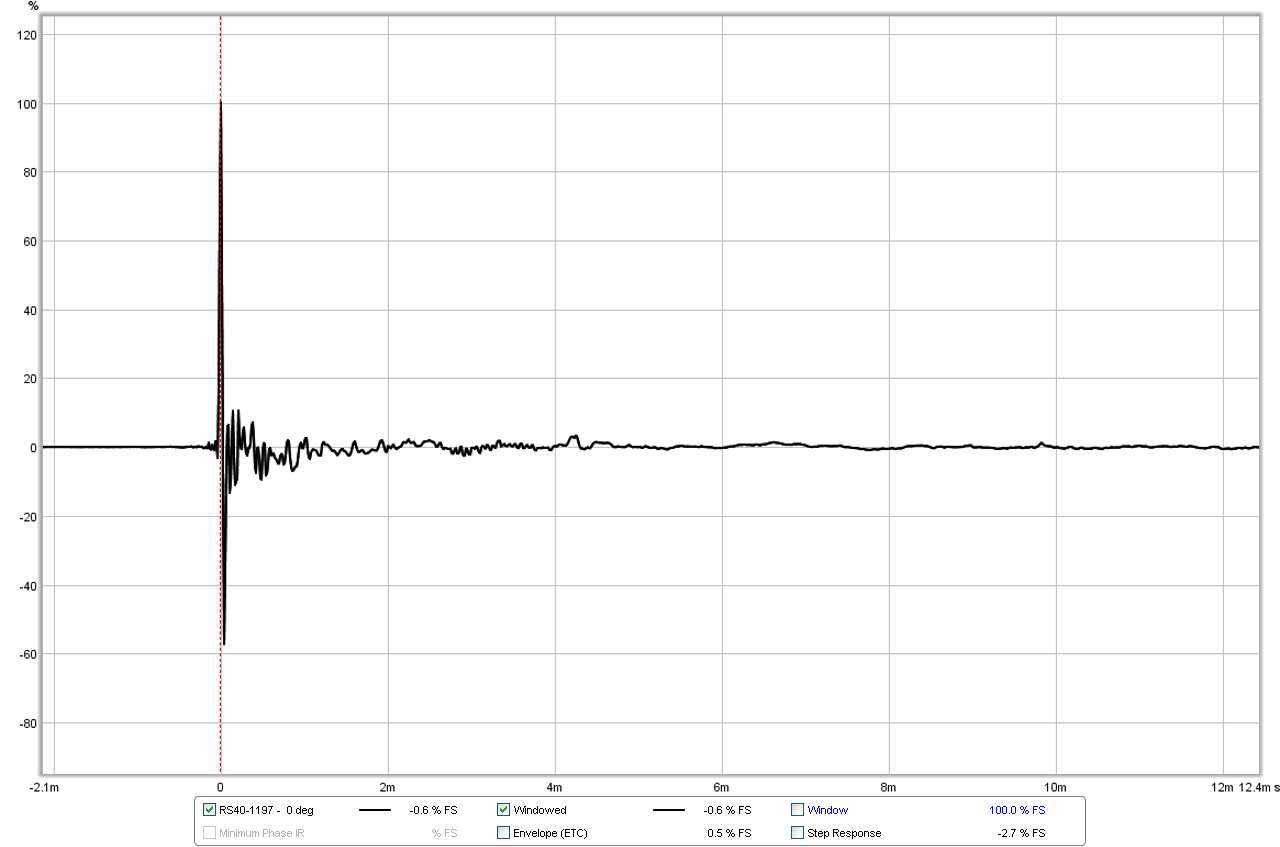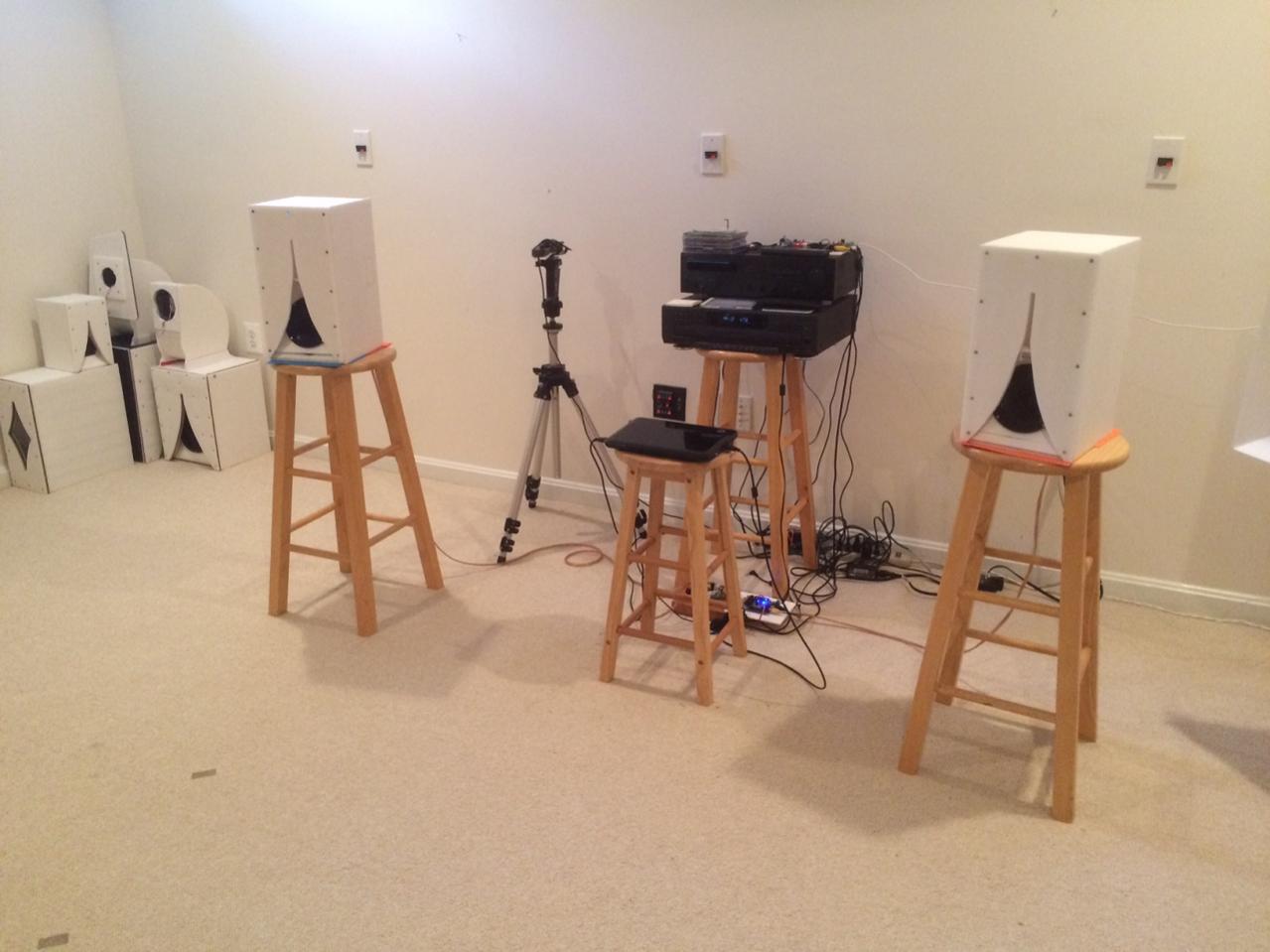I suggest you take a look at the mini Karlsonator thread, and the Karlsonator thread, proper. Also take a look at the Speaker that Kicks Butt thread. The discussion is all there with theory and practice as to why it works. Also, look at my take of a modern K using a 6th order band pass approach.
http://www.diyaudio.com/forums/full-range/239338-mini-karlsonator-0-53x-dual-tc9fds.html
http://www.diyaudio.com/forums/full-range/239386-karlsonator.html
http://www.diyaudio.com/forums/full-range/237948-speaker-kicks-butt-large-spaces.html
http://www.diyaudio.com/forums/full-range/268524-xki-xs-ab-initio-karlson-6th-order-bandpass.html
Here are measurements of a 0.40x scale mini Karlsonator with a 3FE25 driver:

The advantages of the Karlsonator over other alignments briefly is this:
1. Full rich bodied bass and mid bass that is so great that it never needs baffle step compensation. I know of no other speaker that has this much rich full bass gain. So for example, if you have a 90dB sensitive driver, usually that means when put in a speaker, the bass will falloff (even with a MLTL or BR box) by about -5dB or so for a typical width speaker box circa 6in to 12in wide baffle. So you really have an 85dB sensitive speaker if balanced for bass. With the Karlsonator, you get the full 90dB down to the low corner frequency. For example look at the bass output from a Karlsonator withe the CHN-70, the sensitivity is pretty flat all the way to the 70Hz box tuning frequency - there is no BSC applied here for an 8in wide baffle:

2. The polar dispersion if very wide and uniform because the K-aperture acts as an acoustic lens that forces a smooth even dispersion. Look at the polar variation for the XKi with a RS100 driver (+/-1dB over 90 deg angle up to 6kHz and +/-2.5dB up to 10kHz) - so you get a wide sweet spot:

3. The dynamics and transient response are excellent, so drums, guitar, piano, stand up bass, etc sound live and realistic. Take a look at the impulse of the RS 40-1197 in the mini Karlsonator (the driver needs to be clean to start with, the cabinet does not mess up a good IR if it is there):

4. It's very musical sounding and very engaging to listen to. There is no fatigue and in fact, you can take a driver that normally may have some nasty peaks that cause fatigue in an open face speaker, put it in a Karlsonator and the aperture smooths out and cleans up the peaks - homogenizes it and the speaker can be listened to without harshness. Listen to some sound clips in the mini Karlsonator thread and you will get an idea.
What's the downside? The K-aperture will cause some dips in the mid response, the famous W shaped set of dips. These are not that audible or noticable, but prevent the Karlsonator from being a hifi speaker or a "monitor". For normal listening to music though, it is, again and again, my preferred "go to" speaker. Also, I would recommend it as a first full range speaker build. Very easy to make.
Here is a room full of Karlsonators:

If you want a recommendation where to start:
Plans for 0.40x here: http://www.diyaudio.com/forums/full...sonator-0-53x-dual-tc9fds-56.html#post3880182
Buy a $19 faital Pro 3FE25 driver and you have a 90dB full range speaker that goes down to 70Hz in a compact easy to make box. Ansd it sounds great! Lots of happy build on that thread.
http://www.diyaudio.com/forums/full-range/239338-mini-karlsonator-0-53x-dual-tc9fds.html
http://www.diyaudio.com/forums/full-range/239386-karlsonator.html
http://www.diyaudio.com/forums/full-range/237948-speaker-kicks-butt-large-spaces.html
http://www.diyaudio.com/forums/full-range/268524-xki-xs-ab-initio-karlson-6th-order-bandpass.html
Here are measurements of a 0.40x scale mini Karlsonator with a 3FE25 driver:

The advantages of the Karlsonator over other alignments briefly is this:
1. Full rich bodied bass and mid bass that is so great that it never needs baffle step compensation. I know of no other speaker that has this much rich full bass gain. So for example, if you have a 90dB sensitive driver, usually that means when put in a speaker, the bass will falloff (even with a MLTL or BR box) by about -5dB or so for a typical width speaker box circa 6in to 12in wide baffle. So you really have an 85dB sensitive speaker if balanced for bass. With the Karlsonator, you get the full 90dB down to the low corner frequency. For example look at the bass output from a Karlsonator withe the CHN-70, the sensitivity is pretty flat all the way to the 70Hz box tuning frequency - there is no BSC applied here for an 8in wide baffle:

2. The polar dispersion if very wide and uniform because the K-aperture acts as an acoustic lens that forces a smooth even dispersion. Look at the polar variation for the XKi with a RS100 driver (+/-1dB over 90 deg angle up to 6kHz and +/-2.5dB up to 10kHz) - so you get a wide sweet spot:

3. The dynamics and transient response are excellent, so drums, guitar, piano, stand up bass, etc sound live and realistic. Take a look at the impulse of the RS 40-1197 in the mini Karlsonator (the driver needs to be clean to start with, the cabinet does not mess up a good IR if it is there):

4. It's very musical sounding and very engaging to listen to. There is no fatigue and in fact, you can take a driver that normally may have some nasty peaks that cause fatigue in an open face speaker, put it in a Karlsonator and the aperture smooths out and cleans up the peaks - homogenizes it and the speaker can be listened to without harshness. Listen to some sound clips in the mini Karlsonator thread and you will get an idea.
What's the downside? The K-aperture will cause some dips in the mid response, the famous W shaped set of dips. These are not that audible or noticable, but prevent the Karlsonator from being a hifi speaker or a "monitor". For normal listening to music though, it is, again and again, my preferred "go to" speaker. Also, I would recommend it as a first full range speaker build. Very easy to make.
Here is a room full of Karlsonators:

If you want a recommendation where to start:
Plans for 0.40x here: http://www.diyaudio.com/forums/full...sonator-0-53x-dual-tc9fds-56.html#post3880182
Buy a $19 faital Pro 3FE25 driver and you have a 90dB full range speaker that goes down to 70Hz in a compact easy to make box. Ansd it sounds great! Lots of happy build on that thread.
Last edited:
some very good recordings came from use of the original Karlson as a monitor

An externally hosted image should be here but it was not working when we last tested it.

An externally hosted image should be here but it was not working when we last tested it.
Last edited:
thanks xrk for the details. i want to use k box for below drivers,
fane 12-250TC
Fane International Ltd Loud Speakers
from another post i came to know freddi has used these drivers already in K boxes. but it seems their qts and Fs are inconsistent with manufacturer spec sheet values. i want to confirm if TS and Fs values affect volume of K boxes. or K12/K15 boxes can be used for these drivers without bothering about the parameters?
fane 12-250TC
Fane International Ltd Loud Speakers
from another post i came to know freddi has used these drivers already in K boxes. but it seems their qts and Fs are inconsistent with manufacturer spec sheet values. i want to confirm if TS and Fs values affect volume of K boxes. or K12/K15 boxes can be used for these drivers without bothering about the parameters?
K12/k15 need low Qts drivers (below 0.35 is best). karlsonator can use moderate 0.35 to 0.55 Qts. Although for small drivers works with high Qts too.
then clearly fane is ruled out!
- I ran the Fane in a Karlsonator 12 - with that cabinet, it could play hip-hop bass reasonably well but upper bass had to be peaking and was somewhat heavy. In K12 with the slit vent damped with a piece of bonded Dacron, the Fane played well with no trace of boom - its hot mids and lively treble were good for the K - but it had no low bass so would require a subwoofer. K12 subjectively played/plays well in the mids and highs with vintage speakers having qts as high or higher than 1 - those were low vas - high fs types. To have good subject "kick" , stronger motors help. I did not take qtc for the Fane/K12 combo.
i am trying to find advantages of karlsonator design as compared against traditional sealed, vented and TL boxes.
More bass. High efficiency. No BSC needed. Wide dispersion. Relatively compact size for their efficiency.
also what to know what type of drivers (TS params) are suitable for these?
As x said, moderate Qts is best, though they are fairly tolerant of differing parameters.
For that particular Fane 12, I think you'd be happiest in a simple one fold ML-TQWT instead. Less chance of bass boom. A box like this is sort of like a Karlsonator without the front loading. A big fat TQWT enclosure will IME sound more lively and less flabby than an equivalent BR or sealed box with that sort of pro driver.
i don't look at the mid bass "dip" in a karlson as a bad thing it's kind of like having the "loudness" contour built into the sound of the enclosure.(currently playing with the idea of trying to make the dip happen at between 300 -400 hz)
back when the karlson was first introduced not many amp/recievers had "loudness" contour eq built in which might well be why they appealed to some.
back when the karlson was first introduced not many amp/recievers had "loudness" contour eq built in which might well be why they appealed to some.
same sort of concept yes.
from my perspective as an old dog eared sound dude i find midrange contour has alot to do with perceived volume and intelligibility and as a rule eq'ing low mid out on most mic inputs would take muddiness out of the mix. which is why i tend to like some of the old yamaha silver face stuff, the one's with the variable loudness controls for playback listening.
from my perspective as an old dog eared sound dude i find midrange contour has alot to do with perceived volume and intelligibility and as a rule eq'ing low mid out on most mic inputs would take muddiness out of the mix. which is why i tend to like some of the old yamaha silver face stuff, the one's with the variable loudness controls for playback listening.
same sort of concept yes.
from my perspective as an old dog eared sound dude i find midrange contour has alot to do with perceived volume and intelligibility and as a rule eq'ing low mid out on most mic inputs would take muddiness out of the mix. which is why i tend to like some of the old yamaha silver face stuff, the one's with the variable loudness controls for playback listening.
With you 100% on this turk.
Had a Big Yamaha receiver with big JBL monitors (4350? 4343?) for off-air monitoring at a broadcast installation in the late 70's. The variable loudness was brilliant as an idea and worked perfectly. Never understood why Yamaha did not persist with it. Maybe the punters just didn't get it?
edit: Pretty sure they were 4343's
In later life I found removal of upper bass / lower mid a recurring theme in recording and mastering music. Some desks (and recording software also) have a dedicated EQ control just for this.
Last edited:
"Maybe the punters just didn't get it?"
exactly!!the reason yami stopped making the variable loudness contour is ocd audiophiles couldn't agree on what was a right/proper setting,that was the start of the eq defeat/no eq trend fostered by the belief that eq sullied there ever precious sound.
"In later life I found removal of upper bass / lower mid a recurring theme in recording and mastering music. Some desks (and recording software also) have a dedicated EQ control just for this."
good grief man don't let people know you messed with frequency response at the recording stage the "phile's" find enough reason cast on studio mix engineers and producers!
back to speaker response although i adhere to the concept of designing to achieve a flat response (anechoic chamber) no one listens to them that way because in the real world situation of one's living room, room modes and personal preference come to play. so if a speaker isn't text book flat does that make it bad/unlistenable i don't think so but that's me.
exactly!!the reason yami stopped making the variable loudness contour is ocd audiophiles couldn't agree on what was a right/proper setting,that was the start of the eq defeat/no eq trend fostered by the belief that eq sullied there ever precious sound.
"In later life I found removal of upper bass / lower mid a recurring theme in recording and mastering music. Some desks (and recording software also) have a dedicated EQ control just for this."
good grief man don't let people know you messed with frequency response at the recording stage the "phile's" find enough reason cast on studio mix engineers and producers!
back to speaker response although i adhere to the concept of designing to achieve a flat response (anechoic chamber) no one listens to them that way because in the real world situation of one's living room, room modes and personal preference come to play. so if a speaker isn't text book flat does that make it bad/unlistenable i don't think so but that's me.
turk 182;4509837 snip "In later life I found removal of upper bass / lower mid a recurring theme in recording and mastering music. Some desks (and recording software also) have a dedicated EQ control just for this." good grief man don't let people know you messed with frequency response at the recording stage the "phile's" find enough reason cast on studio mix engineers and producers! end snip [/QUOTE said:Haha ! Many (but not all) audiophiles have no idea AT ALL how their music gets made. Those audiophiles who work in the industry tend to be less dogmatic about "right" and "wrong".
i came across this interesting video of karlson's interview,
https://www.youtube.com/watch?v=AGSqs9zmNO4
https://www.youtube.com/watch?v=AGSqs9zmNO4
- Status
- This old topic is closed. If you want to reopen this topic, contact a moderator using the "Report Post" button.
- Home
- Loudspeakers
- Full Range
- advantages of karlsonator